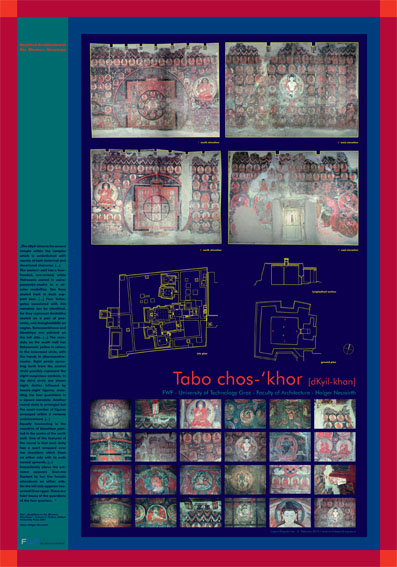
dKyil-khan
„The dKyil-khan is the second temple within the complex which is embellished with murals of both historical and devotional character. [...]
The western wall has a four-headed, two-armed, white Vairocana seated in vajraparyanka-mudra in a circular medaillon. Two lions seated back to back support seat. [...] Four Tathagatas associated with this mandala can be identified, for they represent Amitabha seated on a pair of peacocks, and Amoghasiddhi on eagles. Ratnasambhava and Aksobhya are painted on the left side. [...] The mandala on the south wall has Sakyamuni, yellow in colour, in the innermost circle, with the hands in dharmacakra-mudra. Eight petals sprouting forth from the central circle possibly represent the eight auspicious symbols. In the third circle are shown eight deities followed by twenty-eight figures, including the four guardians in a square mandala. Another round circle is arranged but the exact number of figures arranged within it remains undetermined. [...]
Equally fascinating is the mandala of Aksobhya painted in the centre of the north wall. One of the features of the mural is that each deity has a scarf wrapped over the shoulders which flows on either side with its ends turned upwards. [...]
Immediately above the entrance appears Srun-ma flanked by her five female attendants on either side. On the left side appears two-armed Chos-rgyal. There are faint traces of the guardians of the four quarters. “
Text: „Buddhism in the Western Himalaya“, Laxman S. Thakur, Oxford University Press 2001
Fotos: Holger Neuwirth